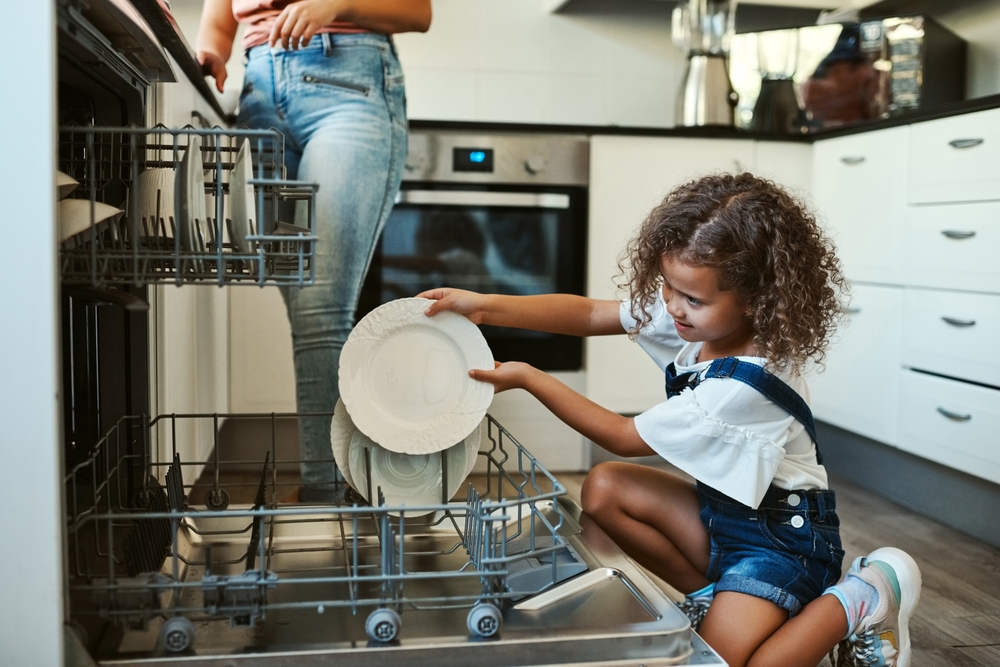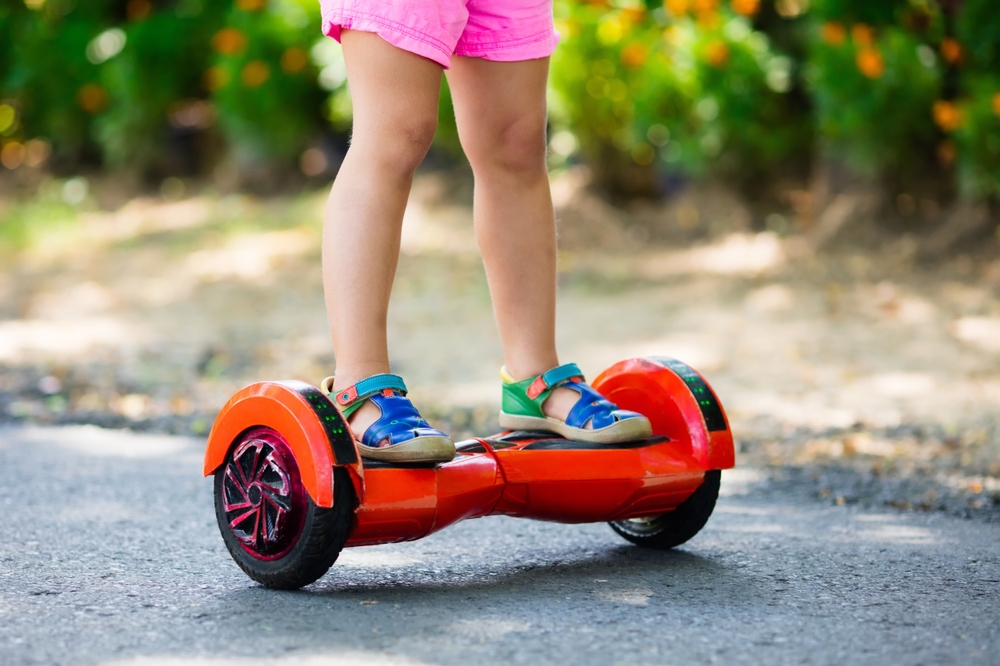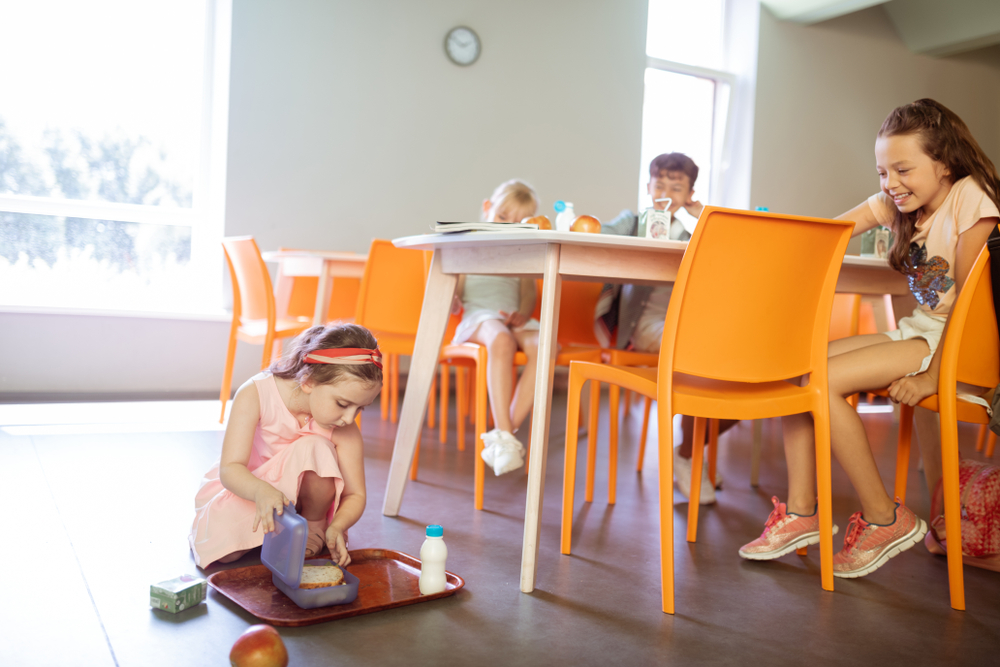Assigning chores is a great way to teach kids responsibility, teamwork, and independence. However, not every household task is suitable for small hands or developing coordination. Some chores that may be too dangerous for young children carry hidden risks that parents often overlook—sharp tools, heavy objects, chemicals, or even falls from simple height differences. Knowing which chores to avoid can help families maintain a safe environment while still encouraging helpful habits. Here are seven everyday chores that may look harmless but can pose real dangers for younger kids.
1. Taking Out the Trash Can Lead to Hidden Hazards
One of the chores that may be too dangerous for young children is taking out the trash. Trash bags can contain broken glass, metal lids, or leaking chemicals that cut or irritate skin. The bags themselves can also be heavy or awkward to lift, putting strain on growing joints and backs. Outside, trash bins may attract pests or tip over easily, leading to injuries. Instead, parents can involve kids by having them collect smaller wastebaskets or separate recyclables until they are old enough to handle outdoor disposal safely.
2. Washing Dishes Isn’t Always Safe for Little Hands
Washing dishes seems simple, but it’s another one of the chores that may be too dangerous for young children. Sharp knives, broken glassware, or hot water can easily cause cuts or burns. Many dish detergents are also harsh on sensitive skin, creating rashes or irritation if not properly rinsed. Even the act of standing at a sink for too long can cause slips if the floor becomes wet. A safer alternative is having children help by drying unbreakable items or setting the table.
3. Yard Work Can Expose Kids to Unexpected Risks
Outdoor chores are often fun, but certain types of yard work belong firmly in the “chores that may be too dangerous” category for young children. Mowers, trimmers, and hedge clippers can cause severe injuries even when used under supervision. Garden chemicals or fertilizers may also contain toxins that are harmful if inhaled or touched. Additionally, lifting heavy bags of mulch or soil can lead to strains or back pain. Encourage little helpers to pull weeds by hand, water plants with a small can, or collect fallen leaves instead of operating equipment.
4. Cleaning Bathrooms Involves Dangerous Chemicals
Bathroom cleaning is one of the most common chores that may be too dangerous for young children. Many cleaning products contain bleach, ammonia, or acid-based ingredients that can burn skin and irritate lungs. Children may also mix products accidentally, creating toxic fumes without realizing it. The small, enclosed space of a bathroom makes it even riskier if ventilation is poor. Instead of using harsh chemicals, let children wipe down mirrors with vinegar and water or help refill soap dispensers while an adult handles the deeper cleaning.
5. Cooking and Using Kitchen Appliances Requires More Maturity
Cooking is often a favorite family activity, but it’s also one of the chores that may be too dangerous for young children without close supervision. Stovetops, ovens, and even microwaves can cause burns or fires when used incorrectly. Knives and peelers introduce additional risks if motor skills aren’t fully developed. Children may also forget to turn off appliances or handle hot pans safely. Parents can still involve them by assigning safe prep tasks like rinsing vegetables or mixing batter while teaching proper kitchen safety over time.
6. Doing Laundry Involves More Than Just Pressing Buttons
Laundry duty might seem harmless, but it’s another of the chores that may be too dangerous for young children. Washing machines and dryers are heavy, moving machines that can cause injury if children climb or lean on them. Detergent pods, in particular, pose a serious poisoning risk because their colorful appearance can be mistaken for candy. Even liquid detergent can cause burns or eye irritation if splashed. Until children are old enough to handle chemicals carefully, parents can have them fold clean clothes or match socks instead.
7. Climbing to Dust or Organize High Shelves
Many parents encourage kids to help tidy up, but reaching high areas is one of those chores that may be too dangerous for young children. Climbing stools or small ladders introduces a significant fall risk, especially for kids who may overreach or lose balance. Objects stored overhead can also fall and cause injuries if not handled properly. Dusting within arm’s reach or organizing lower shelves is a safer way to teach tidiness. As kids grow, they can gradually move on to higher or more complex cleaning tasks with adult guidance.
Balancing Independence and Safety in Household Responsibilities
Recognizing chores that may be too dangerous for young children doesn’t mean removing them from household responsibilities altogether. It’s about adjusting tasks to match their physical abilities and understanding of risk. Parents can gradually introduce more challenging chores as kids demonstrate maturity and safety awareness. The goal is to teach responsibility while preventing injuries, accidents, or exposure to unsafe materials. With the right balance, children learn valuable life skills safely—one age-appropriate task at a time.
Which household chore do you think is the riskiest for young kids to handle? Share your experiences or safety tips in the comments below.
What to Read Next…
7 After-School Activities That Are Quietly Putting Kids in Danger
Beyond The Toys: 8 Hidden Dangers In Your Child’s Toys
Kids’ Meds: 5 Dangerous Prescriptions You Didn’t Question for Kids
The Danger In Your Bathtub: 8 Hidden Dangers In Your Child’s Bathtub









